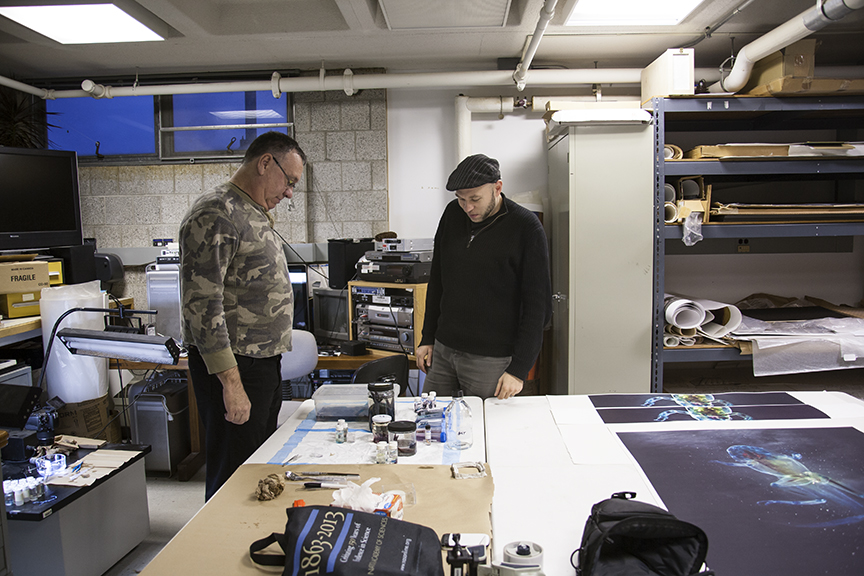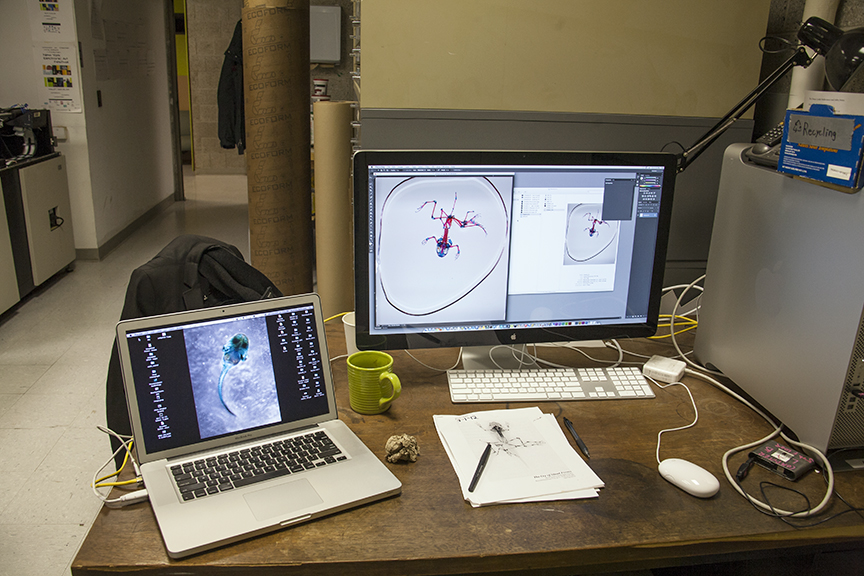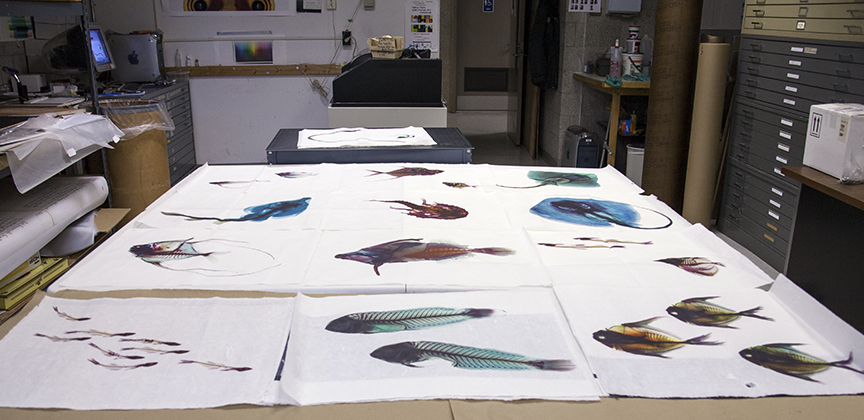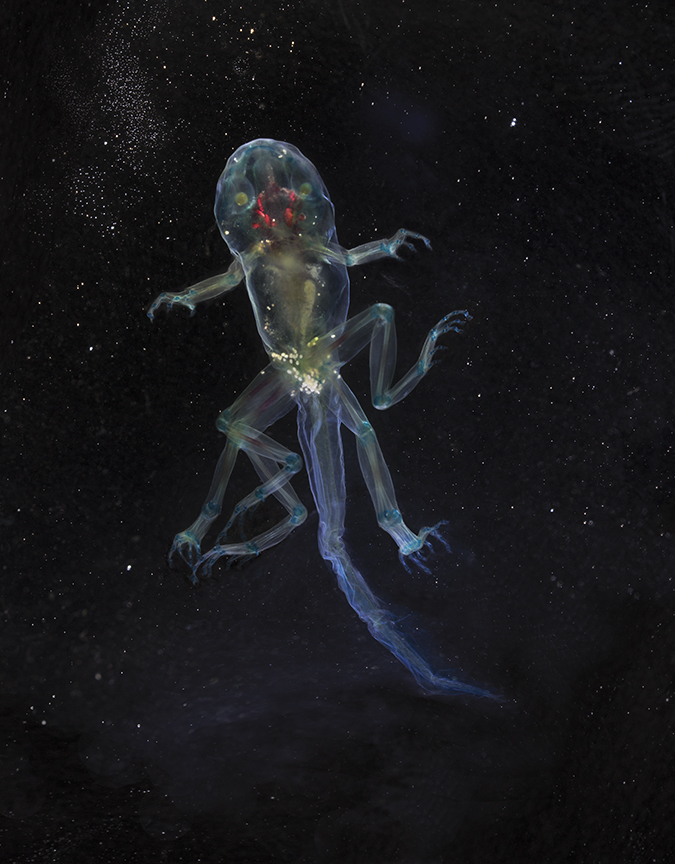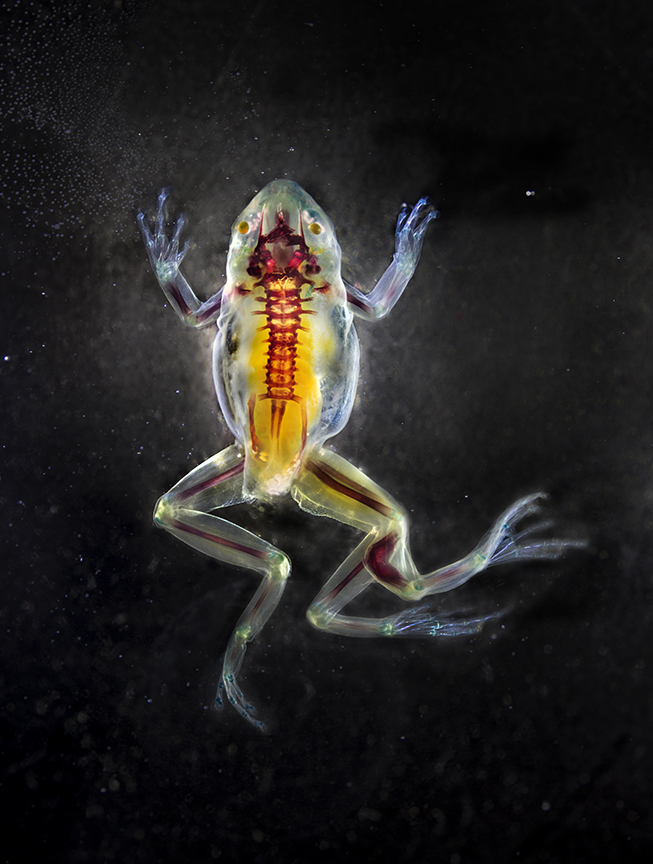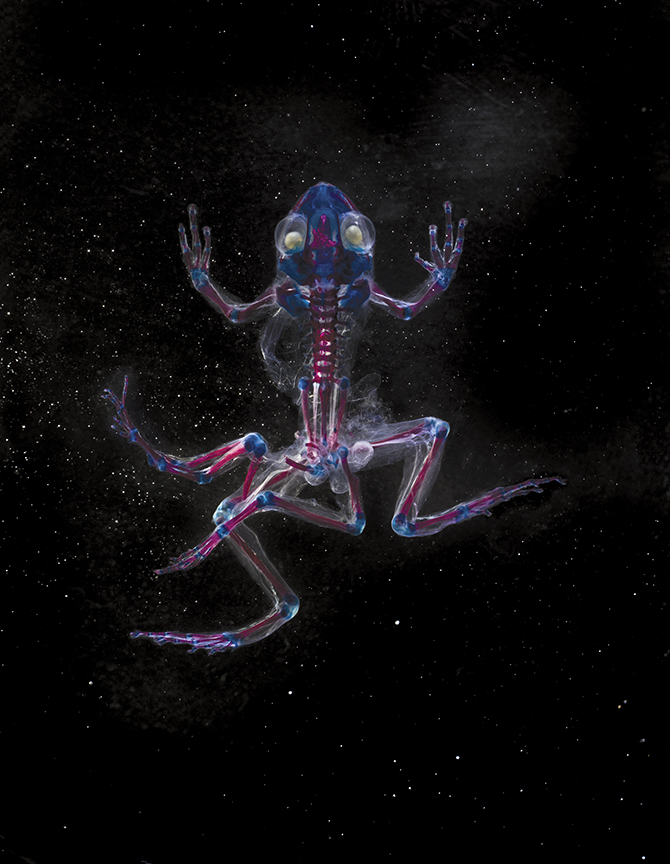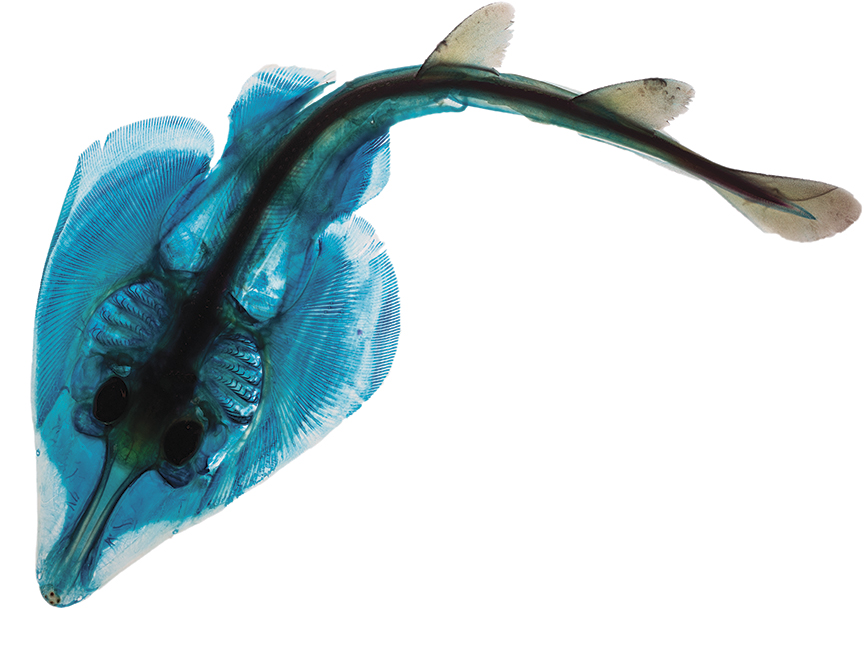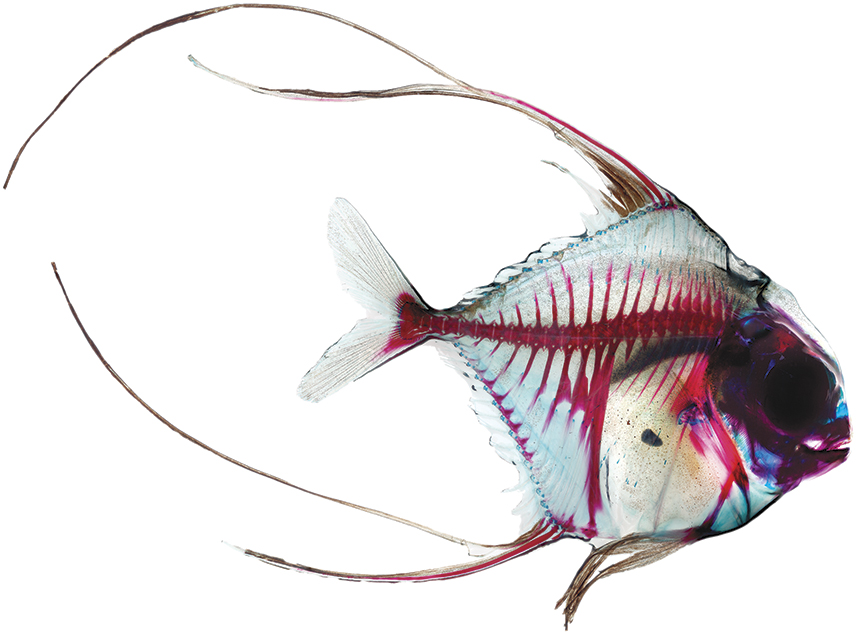Recently the IEA hosted Brandon Ballengée for an artist residency, focusing primarily on print work. Brandon, who has been to the IEA once before nearly ten years ago, is not only a visual artist but also a biologist and environmental activist based in Brooklyn, NY. Brandon’s biology and art work overlap: he studies creatures in the field, focusing heavily on developmental deformities and population declines, particularly in amphibians. The specimens he collects for research are documented in various ways and often become the subjects featured in his print work.
During his residency, Brandon focused on scanning new specimens of amphibians found in areas affected by the BP Deepwater Horizon oil rig explosion and subsequent oil spill into the Gulf of Mexico in the Spring of 2010 and other locations as part of his project entitled Malamp: Reliquaries. Amphibians are particularly vulnerable to being affected by environmental pollution and many of the specimens that Brandon collected exhibited mutations resulting in additional limbs and other malformations. Prior to scanning, the specimens were soaked in a solution to turn their skin transparent and render their internal organs and other parts of their anatomy brightly colors, resulting in images that have an almost otherworldly appearance once they are scanned and printed. Brandon also made a print run of other aquatic organisms collected from the Gulf and elsewhere that were processed in a similar manner to give them the appearance seen in the prints. Both sets of images were printed out using the Iris printer, the frogs on 46×34″ Arches Rives paper and the rest at a smaller size on a light-weight, handmade Chinese paper.
These prints will be featured in an exhibition at the Museum het Domein in Sittard, the Netherlands, opening February 16, 2014, as well as at the National Academy of the Sciences in Washington D.C. at some point during 2014.
Below is some documentation of Brandon at work and the work he produced during his residency.

